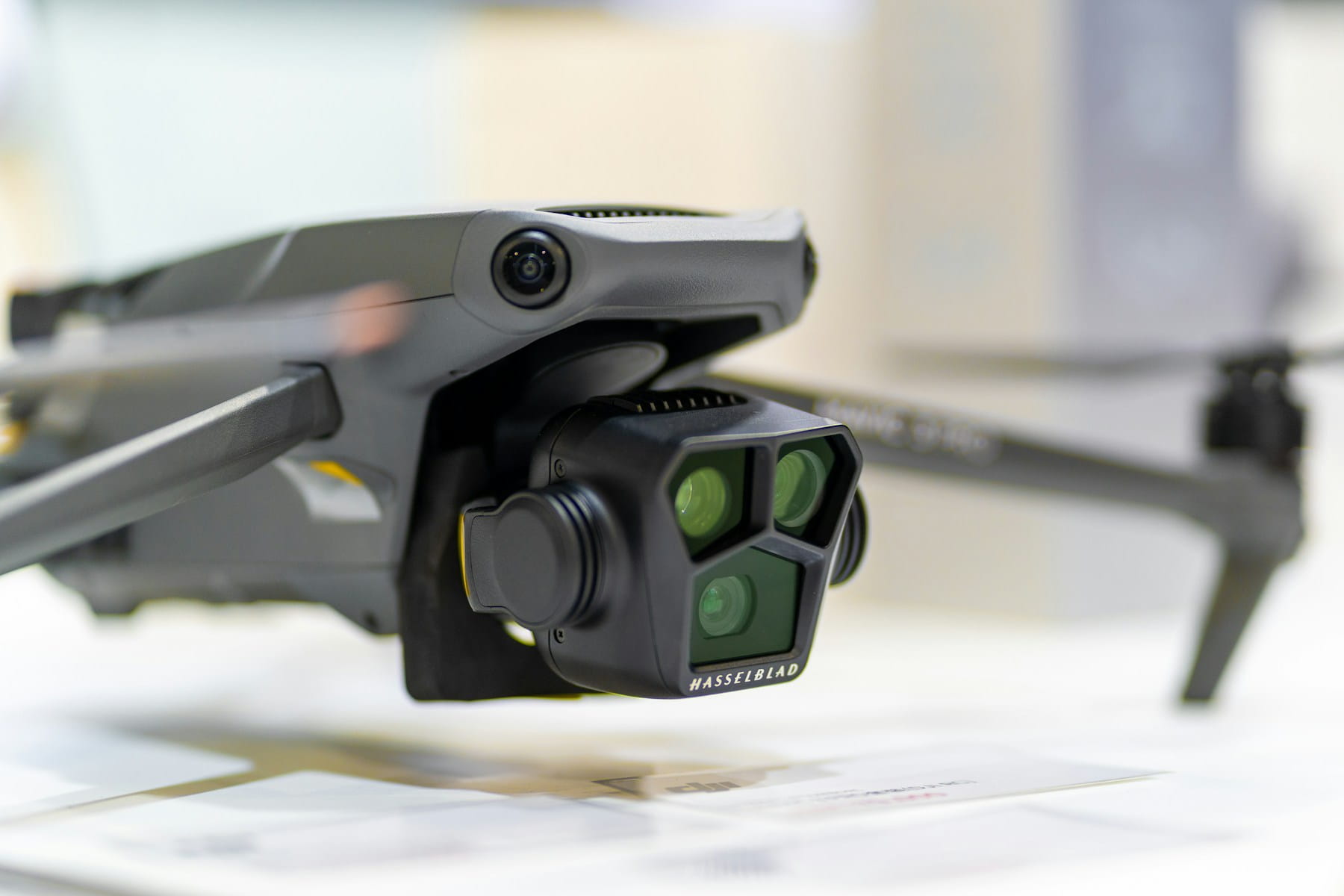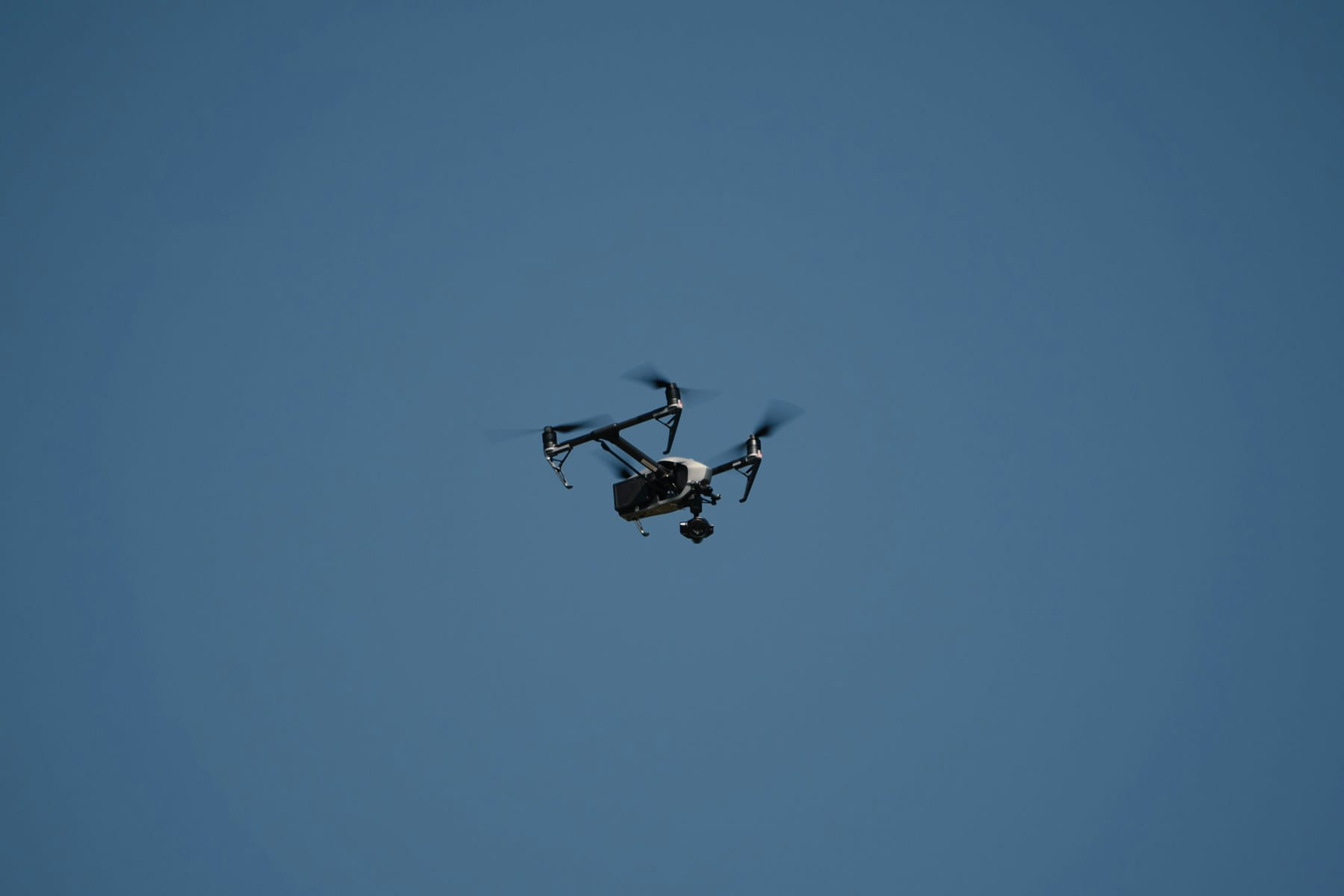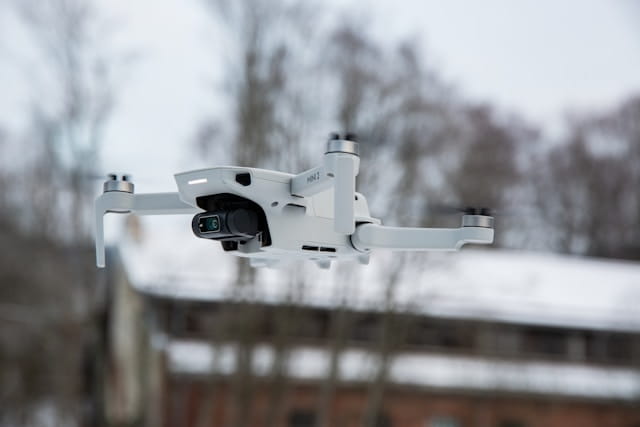What is DJI Cloud?
DJI Cloud is an automated flight data storage and synchronization system that captures comprehensive flight logs—including GPS coordinates, altitude data, battery metrics, and camera settings—from DJI drones and uploads them to secure remote servers. This cloud infrastructure enables multi-device access, automatic backups, and centralized data management for both recreational and professional drone operators.
DJI's cloud system represents a fundamental shift in how drone operators manage their flight data. The cloud functionality automatically backs up flight logs and synchronizes them across multiple devices, creating a centralized repository for operational records. This system addresses critical challenges faced by commercial and recreational pilots who generate substantial amounts of flight data over time.
The cloud infrastructure operates seamlessly in the background, uploading flight records whenever a connection becomes available. But many pilots find themselves puzzled by the mechanics of this system. Where exactly does the data go? How can you access it? What happens when your local storage fills up? Professional drone operations software provides additional layers of data management beyond basic cloud storage.
These questions become particularly pressing for operators who fly regularly through flight planning systems. A single flight can generate significant data, and over months or years, this accumulation can overwhelm device storage. The cloud system offers a solution, though understanding its nuances requires some exploration.
Table of contents
- How DJI cloud storage works
- Flight log synchronization across devices
- Accessing your cloud-stored flight data
- Managing local storage and cache
- Third-party tools for cloud data access
- Controller-specific cloud behavior
- Data privacy and security considerations
- Troubleshooting common cloud issues
- Best practices for flight data management
- Professional operations and compliance
- Frequently Asked Questions
- Implementation Considerations
- In Summary
How DJI cloud storage works
DJI's cloud storage operates through an automated system that captures flight data from connected devices and uploads it to DJI's servers. This process begins the moment you complete a flight and establish an internet connection. The small cloud icon that appears next to flight records indicates successful upload to DJI's remote servers.
Important Note: Since June 2024, DJI drones operated in the United States no longer have the option to sync their flight logs to DJI servers. This change affects US-based operators differently than international users.
The system captures comprehensive flight information including GPS coordinates, altitude data, battery performance metrics, gimbal movements, and camera settings. This creates a complete digital fingerprint of each flight session. The data gets compressed and encrypted before transmission, maintaining both efficiency and security during the upload process.
Storage capacity appears unlimited from a user perspective. DJI hasn't published specific storage limits, suggesting the company allocates sufficient space for typical user needs. This generous approach makes sense given the relatively small file sizes of flight logs compared to actual video or image files captured during operations.
The automation aspect proves both convenient and sometimes frustrating. Users can't selectively choose which flights to upload or exclude sensitive missions from cloud storage. Everything gets uploaded automatically when connectivity allows, though DJI's Local Data Mode provides an option to disable internet connections entirely for sensitive operations.
Network requirements remain minimal. Even slow internet connections can handle flight log uploads since the data files are relatively compact. However, poor connectivity might delay uploads, causing temporary discrepancies between local and cloud records important for compliance tracking.
Flight log synchronization across devices
Multi-device synchronization stands as one of DJI cloud's most valuable features. Pilots using multiple controllers or switching between different mobile devices can access their complete flight history regardless of which device initiated the original flight, supporting efficient fleet management operations.
The sync process works bidirectionally. New devices connecting to your DJI account automatically download previously uploaded flight records. This creates consistency across your entire setup, whether you're using an RC controller, smartphone app, or tablet interface.
Timing variations can occur during synchronization. Fresh uploads might take several minutes to appear on other devices, depending on server processing loads and internet connectivity. This delay occasionally causes confusion when pilots expect immediate availability across all platforms.
Device-specific limitations do exist. Some older controllers or apps might not support full synchronization features, creating gaps in the unified experience. Checking compatibility before relying on cross-device access prevents disappointment during critical operations requiring equipment management coordination.
The synchronization includes metadata like flight duration, distance traveled, and maximum altitude reached. However, it doesn't include actual media files captured during flights. Photos and videos remain stored locally unless manually backed up through separate systems.
Accessing your cloud-stored flight data
Direct access to DJI cloud data through official channels remains surprisingly limited. DJI's own apps provide basic viewing capabilities, but users can't download raw flight logs or perform detailed analysis through these interfaces needed for comprehensive flight reporting. The company seems to prioritize simplicity over advanced functionality.
The DJI Fly app offers the most straightforward access method. Opening the flight log section while connected to the internet displays both local and cloud-stored records. The interface distinguishes between sources using visual indicators, though the functionality remains basic.
DJI Assistant 2 provides slightly more detailed information for certain aircraft models. This desktop application can display flight paths, altitude profiles, and basic telemetry data. But it still doesn't offer comprehensive data export or analysis tools required for professional operations.
Professional pilots often find these limitations frustrating. Compliance requirements, insurance claims, or operational analysis frequently demand more detailed data access than DJI's native tools provide for tracking pilot flight hours. This gap has created opportunities for third-party solutions.
Browser-based access doesn't exist. DJI hasn't developed a web portal for cloud data management, forcing users to rely entirely on mobile apps or desktop software. This approach limits accessibility for pilots working on various computer systems.
According to DJI's 2025 Drone Security White Paper, DJI FlightHub 2 provides enterprise-grade data management capabilities, though this requires separate subscription services beyond basic consumer cloud storage.
Managing local storage and cache
Local storage management becomes critical for pilots who fly regularly. Flight logs accumulate quickly, consuming valuable device memory and potentially affecting app performance. Understanding how to balance local storage with cloud backup prevents operational disruptions affecting pre-flight checklist procedures.
Clearing app cache removes locally stored flight records while preserving cloud backups. This process frees device memory without losing historical data. The next internet connection automatically re-downloads recently uploaded records, restoring immediate access to recent flights.
Controller-based storage operates differently than smartphone storage. RC controllers maintain separate cache systems that can be cleared independently of mobile device storage. This separation provides flexibility in managing storage across different components of your drone setup.
The cache clearing process varies by device type. Mobile apps typically include cache management in their settings menus, while RC controllers might require different procedures. Some controllers allow cache clearing through button combinations or menu systems.
Timing cache clearing requires consideration. Clearing cache while offline removes all local flight records until the next sync opportunity. This could temporarily eliminate access to recent flight data if internet connectivity isn't available.
Third-party tools for cloud data access
Several third-party applications have emerged to fill gaps in DJI's native cloud access capabilities. These tools typically offer enhanced analysis features, better data export options, and more comprehensive flight log management supporting professional data monitoring requirements.
Airdata UAV represents one popular solution. According to 2025 industry discussions, this platform can sync with DJI accounts and retrieve comprehensive flight data for analysis. Users gain access to detailed telemetry information, flight path visualization, and export capabilities not available in official DJI apps.
The integration process usually requires account authentication. Third-party tools must connect to your DJI account to access cloud-stored data. This creates potential security considerations that users should evaluate carefully before granting access to sensitive operational information.
Data export functionality varies significantly between third-party tools. Some focus on basic CSV exports for spreadsheet analysis, while others provide specialized formats for specific use cases like insurance documentation or regulatory compliance required for Part 107 operations.
Cost structures differ across available options. Some third-party tools offer free basic access with premium features requiring subscription payments. Others charge one-time fees or operate on usage-based pricing models.
Compatibility considerations affect tool selection. Not all third-party applications support every DJI aircraft model or controller type. Verifying compatibility before committing to a particular solution prevents frustration and wasted investment.
Controller-specific cloud behavior
Different DJI controllers exhibit unique cloud behavior patterns. Understanding these variations helps pilots optimize their data management strategies across different equipment configurations supporting pilot training programs.
RC controllers with built-in screens typically maintain more sophisticated cache management systems. These devices can display cloud sync status, manage local storage more granularly, and provide visual indicators for upload progress. The integration feels more seamless compared to smartphone-based solutions.
Smart controllers offer enhanced offline capabilities. These devices can store larger quantities of flight logs locally, reducing dependence on immediate cloud connectivity. This proves valuable for operations in areas with limited internet access or remote inspection sites.
Standard controllers relying on mobile devices inherit the limitations of their connected smartphones or tablets. Storage capacity, processing power, and internet connectivity all depend on the mobile device specifications rather than the controller itself.
WiFi connectivity requirements vary by controller type. Some controllers can upload flight logs through their own WiFi connections, while others require mobile device connectivity for cloud access. This affects upload timing and reliability in different operational scenarios.
Battery management impacts cloud functionality. Controllers with low battery levels might disable cloud uploads to preserve power for flight operations. This could delay data synchronization until charging opportunities become available.
Data privacy and security considerations
DJI cloud storage raises important privacy and security questions for drone operators. Understanding these implications helps pilots make informed decisions about data management and operational security for construction projects and sensitive sites.
Data encryption protects flight logs during transmission and storage. DJI implements industry-standard encryption protocols including AES-256 to secure data in transit and at rest. However, the company maintains access to encrypted data for system administration and potential regulatory compliance.
Geographic data sensitivity varies by operational context. Military installations, critical infrastructure, or sensitive commercial sites might require avoiding cloud uploads entirely. Some organizations implement policies prohibiting cloud storage of flight data from specific locations requiring strict compliance protocols.
Regulatory compliance considerations affect different operators differently. Some industries or government contracts explicitly prohibit cloud data storage, requiring entirely local data management solutions. Professional pilots should verify compliance requirements before relying on cloud systems.
Account security becomes paramount when cloud storage contains operational history. Strong passwords, two-factor authentication, and regular account monitoring help protect against unauthorized access to flight records. Compromised accounts could expose sensitive operational information affecting client confidentiality.
Data retention policies aren't clearly published by DJI. The company hasn't specified how long flight data remains in cloud storage or under what circumstances it might be deleted. This uncertainty complicates long-term data management planning for professional operations.
According to DJI's Enterprise Data Security documentation, FlightHub 2 uploads, stores and manages data on cloud servers operated by Amazon Web Services, compliant with ISO security certifications including ISO 27701 for privacy information management.
Troubleshooting common cloud issues
Cloud synchronization problems affect many DJI users, though solutions often exist for common issues. Understanding typical problems and their remedies prevents frustration and ensures reliable data management supporting risk assessment procedures.
Connection failures represent the most frequent issue. Poor internet connectivity, firewall restrictions, or server maintenance can prevent successful uploads. Testing connectivity with other internet services helps isolate network-related problems from DJI-specific issues.
Account authentication errors sometimes block cloud access. Expired passwords, changed security settings, or regional restrictions can prevent successful login. Verifying account credentials through DJI's website often resolves authentication problems.
Sync delays frustrate users expecting immediate cross-device availability. Server processing loads, large flight log backlogs, or network congestion can delay synchronization. Patience often resolves these issues, though persistent delays might indicate deeper problems.
Missing flight records occasionally occur despite successful uploads. App bugs, server glitches, or account synchronization errors can cause temporary data visibility issues. Force-closing and restarting DJI apps frequently restores missing records.
Storage errors might prevent new uploads when cloud storage approaches capacity limits. Though rare, these errors require contacting DJI support for account management assistance. Most users never encounter storage limitations under normal usage patterns.
Best practices for flight data management
Effective flight data management combines cloud convenience with operational reliability. Developing consistent practices prevents data loss and ensures compliance with operational requirements for scaling drone businesses.
Regular backup strategies protect against cloud service interruptions or account access problems. Exporting flight logs periodically through third-party tools creates independent backup copies not dependent on DJI's infrastructure. This redundancy proves valuable for critical operations.
Selective cloud usage might benefit operators with security concerns. Avoiding cloud uploads for sensitive missions while maintaining cloud backup for routine flights balances convenience with security. This requires manual data management but provides greater control.
Documentation standards enhance data utility beyond basic flight logs. Recording mission objectives, weather conditions, and operational notes supplements automated flight data. This additional context proves valuable for analysis, training, and compliance documentation.
Equipment-specific procedures accommodate different controller and app combinations. Developing consistent workflows for each equipment configuration prevents confusion and ensures reliable data capture across various operational scenarios.
Regular review cycles identify data management issues before they become critical problems. Monthly or quarterly data audits verify cloud synchronization, identify missing records, and confirm backup procedures are working correctly.
According to FAA guidance for 2025, while flight logs aren't legally required for most drone pilots, the FAA strongly recommends keeping detailed records for Part 107 operations, particularly when applying for waivers or demonstrating operational compliance.
Professional operations and compliance
Commercial drone operations face unique data management requirements that extend beyond basic flight logging. Regulatory compliance, insurance requirements, and client documentation demands create complex data management scenarios requiring professional operations software.
Record-keeping regulations vary by jurisdiction and operation type. Some regions require specific flight data retention periods, while others mandate particular data formats or storage methods. Professional pilots must understand applicable requirements and configure their data management accordingly.
Insurance documentation often requires detailed flight records for claim processing or policy maintenance. Cloud-stored data might satisfy these requirements, but policy terms should specify acceptable data sources and formats. Some insurers prefer independent data management systems outside manufacturer control.
Client deliverables might include flight data as part of service packages. Survey operations, inspection services, or monitoring contracts often specify data delivery requirements. Cloud-based systems must support these deliverable formats or integrate with compatible export tools.
Audit trail maintenance becomes critical for professional operations. Demonstrating data integrity, chain of custody, and tamper resistance might require documentation beyond basic cloud storage. Professional operations often implement additional data management layers.
Quality assurance procedures should verify data completeness and accuracy. Regular audits of cloud-stored records help identify gaps, errors, or synchronization problems that could affect compliance or client deliverables affecting flight reporting obligations. Proactive monitoring prevents issues from escalating.
Frequently Asked Questions
How do I access my DJI cloud flight logs?
Access DJI cloud flight logs through the DJI Fly app by opening the flight record section while connected to the internet. The app displays both local and cloud-stored records with visual indicators distinguishing between sources. Note that since June 2024, US-based operators no longer have DJI server sync capability. For more detailed analysis, third-party tools like Airdata UAV can sync with your DJI account to retrieve and export comprehensive flight data. DJI Assistant 2 desktop software provides additional viewing options for certain aircraft models, though it offers limited export functionality compared to third-party solutions.
Can I delete flights from DJI cloud?
Direct deletion of individual flights from DJI cloud isn't supported through official DJI apps. The automated system uploads all completed flights without providing selective deletion options. Users can clear local device cache to remove flights from their device while cloud copies persist on DJI servers. For complete data removal, you would need to contact DJI support directly, though their data retention policies and deletion procedures aren't publicly documented. Some third-party flight log management tools may offer deletion capabilities depending on how they integrate with DJI's systems, but these don't remove data from DJI's servers.
Is DJI cloud storage free?
Basic DJI cloud storage for consumer flight logs is included with DJI account creation at no additional cost. Storage capacity appears essentially unlimited for typical consumer use, with DJI not publishing specific storage limits. However, enterprise-grade cloud services like DJI FlightHub 2 require separate paid subscriptions offering advanced features including team collaboration, mission planning, and enhanced data management capabilities beyond basic consumer cloud sync. The free consumer cloud storage covers flight logs and telemetry data but doesn't automatically backup photos or videos captured during flights.
How secure is my flight data in DJI cloud?
DJI implements industry-standard encryption protocols including AES-256 to protect flight data during transmission and storage, according to their 2025 Drone Security White Paper. Data is stored on Amazon Web Services infrastructure (outside mainland China) with ISO 27701 certification for privacy information management. However, DJI maintains administrative access to stored data for system management and potential regulatory compliance. For maximum security, operators can enable Local Data Mode to prevent all internet connectivity, or use DJI FlightHub 2 On-Premises for complete local data control. Consider that storing flight data separately from manufacturer systems enhances privacy for sensitive operations, and strong account security (passwords, 2FA) remains critical for protecting cloud-stored records.
Implementation Considerations
Establishing effective DJI cloud data management requires understanding both the system's capabilities and limitations within your operational context. Begin by evaluating whether cloud storage aligns with your security requirements, particularly for operations involving sensitive locations or confidential client data.
Configure device settings appropriately for your operational needs. Enable Local Data Mode for sensitive missions where internet connectivity poses security risks, while allowing normal cloud sync for routine operations. Document these procedures in your standard operating protocols to ensure consistent application across your team.
Develop backup workflows that don't rely solely on DJI cloud infrastructure. Implement periodic data exports through third-party tools to create independent archives of critical flight records. This redundancy protects against service disruptions, account access issues, or unexpected data loss scenarios.
Account security deserves particular attention given the operational information stored in cloud systems. Implement strong, unique passwords, enable two-factor authentication, and regularly review account access logs for unauthorized activity. Consider using separate DJI accounts for different operational contexts if security requirements vary significantly across your missions.
Regular system testing verifies that cloud synchronization functions correctly across all your devices. Conduct monthly checks confirming that flight logs upload successfully, appear on secondary devices, and can be accessed through any third-party tools you've implemented. Document any synchronization issues for pattern analysis.
For professional operations requiring comprehensive data management beyond DJI's native capabilities, specialized platforms like DroneBundle provide enhanced features including automated compliance documentation, detailed operational analytics, and professional-grade reporting tools designed specifically for commercial drone operations.
In Summary
DJI cloud storage provides a foundation for automated flight data management, offering convenient backup and multi-device synchronization for drone operators. The system captures comprehensive flight information automatically, creating centralized repositories accessible across multiple devices without manual intervention.
Understanding the system's architecture, capabilities, and limitations enables pilots to make informed decisions about data management strategies. While DJI's cloud infrastructure offers convenience and reliability for many use cases, it may not address all requirements for professional operations or security-sensitive missions. Important regional differences exist, particularly the June 2024 change eliminating US-based flight log synchronization.
Effective data management extends beyond simple cloud storage. Professional operators benefit from implementing multi-layered approaches combining cloud convenience with local backups, third-party analysis tools, and systematic documentation practices. This comprehensive strategy ensures data availability, supports compliance requirements, and provides operational flexibility across diverse mission profiles.
The relationship between cloud storage and operational needs continues evolving as drone technology advances and regulatory frameworks mature. Pilots who maintain awareness of available tools, understand privacy implications, and implement robust data management practices position themselves to leverage cloud capabilities while mitigating associated risks and limitations.
Ready to Enhance Your Flight Data Management?
Professional drone operations demand more than basic cloud storage—they require comprehensive data management systems that support compliance, operational analysis, and client deliverables. Whether you're managing multi-device synchronization, tracking detailed flight metrics, or maintaining regulatory documentation, specialized platforms provide capabilities beyond consumer cloud services.
Start your free trial today — no credit card required.
Or book a demo to see how DroneBundle delivers professional-grade flight data monitoring and operations management tools designed for commercial drone operators.



